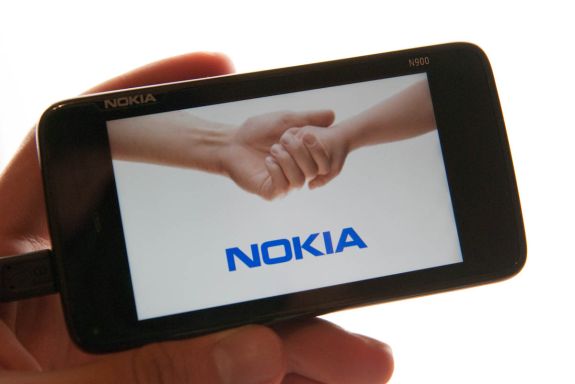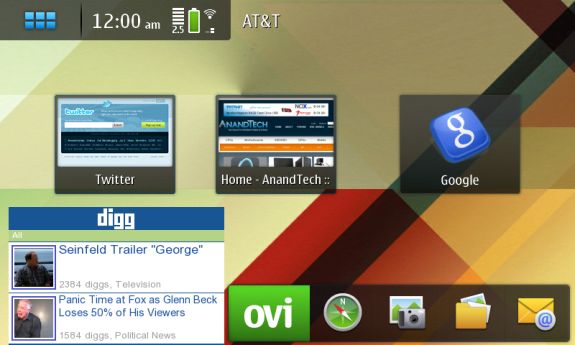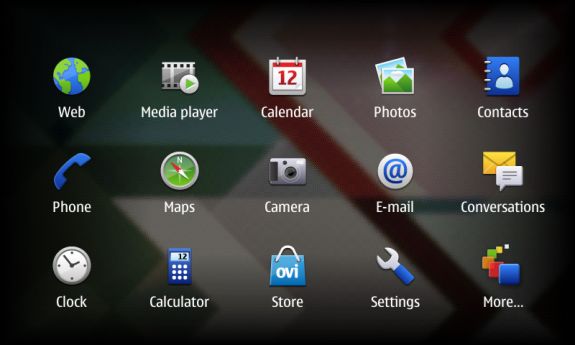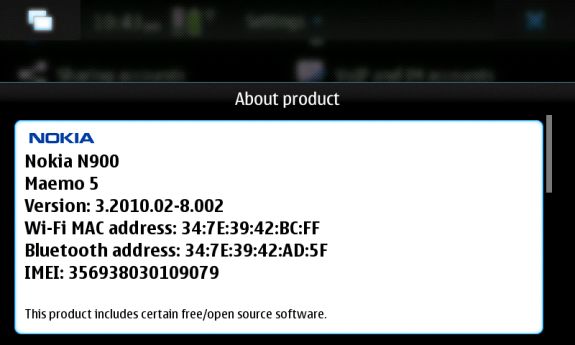Two OMAP 3430 Phones: Nokia N900 and Motorola Droid
by Brian Klug on June 10, 2010 9:29 PM EST- Posted in
- Smartphones
- N900
- Maemo
- Motorola Droid
- Droid
- MeeGo
- Android
- Mobile
Maemo is Debian
That really brings us to what we haven't talked in depth about before; Maemo. Nokia's Maemo operating system started - as I mentioned earlier - as a tablet operating system for the N770, and saw updates for the N800, and N810. As it stands now, all three legacy internet tablets can run up thorough Maemo 4.1.
The N900, however, launched with and continues to exclusively run Maemo 5. The N900 we played with was flashed to PR 1.1, and recently Nokia released PR 1.2 - unfortunately just a few days after we had to part ways with our N900. PR 1.2 brings bugfixes and a few new features to the platform, including support for Skype and Google Talk video calling (which I'll get to in a moment), performance increases for the core OS and browser JavaScript engine, and Qt 4.6.2. The core of the Maemo OS remains largely the same however.
Maemo is derived from Debian and runs natively compiled code, uses GNOME for much of the UI, has an X-Window system, and uses BusyBox core utilities. For all intents and purposes, using Maemo is exactly like using almost any other computer running Debian. What other phone seriously ships with X Terminal installed and presented front and center in the launcher? It really is a bona-fide handheld computer by day, smartphone by night.
In Maemo 5, up at the top is the menu and status bar. This is a bit of a strange departure for earlier Maemo users who likely are used to the same bar being at the left. Regardless, tapping on the icon at top left from the desktop brings up the application launcher, which consists of a 5 by 3 grid of applications overlaid on a beautiful defocused version of your desktop. What's really impressive is how buttery smooth the transition from desktop to launcher is; no doubt a huge testament to some GPU acceleration on the OMAP 3430's PowerVR SGX.
Getting to the next page of apps is unfortunately not a scroll gesture away, instead, you have to tap more in the bottom right corner. This is something that has changed in PR 1.2 however, as 'more' has been removed in favor of touch scrolling, and apps can be rearranged.
This out-of-focus blur is a consistent UI element that acts as Maemo's way of establishing what many on the desktop would identify as window 'focus.' Of course, in this context, it's more likely to be applied to a menu or some launched property panel.
For example, tapping and holding for a copy/paste or save file command brings up a blurry background surrounding the new property window. It's impressive how smooth this transition is, I just can't stress it enough.















68 Comments
View All Comments
Zebo - Friday, June 11, 2010 - link
with 750mhz processor convex keys and ditching the lame D pad making this the best smart phone for my use talking 5-6 hours a day plus on best network instead of T or TM.krazyfrog - Friday, June 11, 2010 - link
Dude, you chat like an eight year-old lol.CityBlue - Friday, June 11, 2010 - link
The latest Maemo5 PR1.2 does bring a welcome improvement to battery life, in some cases as much as 50% improvement to standby time.The recently released Opera Mobile on the N900 is lightning fast - it would be interesting to see how that performs in your comparison tests, or the latest Fennec (Firefox Mobile 1.1). The stock MicroB browser is beginning to look a little long in the tooth what with all the Javascript run-time improvements in competing browsers, but it does still offer the most complete web experience on pretty much any mobile device.
Overall though, a very good and welcome review of Maemo5 which is much misunderstood by a world obsessed with Android and iPhone.
achipa - Friday, June 11, 2010 - link
Two small corrections:Nokia's next MeeGo device is still going to be ARM (MeeGo is a two-platform OS, ARM and Atom), if there is a Moorestown device far along in the pipelines, it's not Nokia's.
PR1.2 is very likely not the last update. Nokia has pledged to deliver QtMobility (the mobile device Qt APIs) in a future update, and there is an active Qt4.7 branch for Maemo5 which also suggests work is being done there.
The Solutor - Friday, June 11, 2010 - link
Not all the Droid/Milestone's keyboard are flat.http://img96.imageshack.us/img96/5872/dsc00180.png
http://img412.imageshack.us/img412/6551/dsc00176.p...
This is my milestone (bought in december).
So there's no need to wait droid 2 to get the raised keys.
Brian Klug - Friday, June 11, 2010 - link
Interesting... looks like they definitely identified that issue somewhere between finishing the CDMA 'Droid' design and the GSM Milestone. Cool stuff!-Brian
strikeback03 - Friday, June 11, 2010 - link
I read that elsewhere as well. Would be nice if the verizon stores got the newer keyboard models out on display to tryBoyBawang - Sunday, June 13, 2010 - link
Sorry to break your heart dude but the ones with raised keyboard were the early builds. Motorola changed it to flat after reported sliding problems with the raised designstrikeback03 - Monday, June 14, 2010 - link
Actually one of my friends got a Moto Droid Thursday and I had a chance to play with it Friday, it did feel like they had improved the key feel slightly. IIRC the Droids on display had concave keys, this one was slightly convex.solipsism - Friday, June 11, 2010 - link
I understand that's because they are in the same package is the reason why you need the BT to be on to get FM, but that can't be too common. After all, most smartphones seem to have WiFi and BT(+EDR) and FM all the same transceiver.For comparison, the iPhone 3GS uses a <a href="http://www.broadcom.com/products/Wireless-LAN/802.... BCM4325</ a>